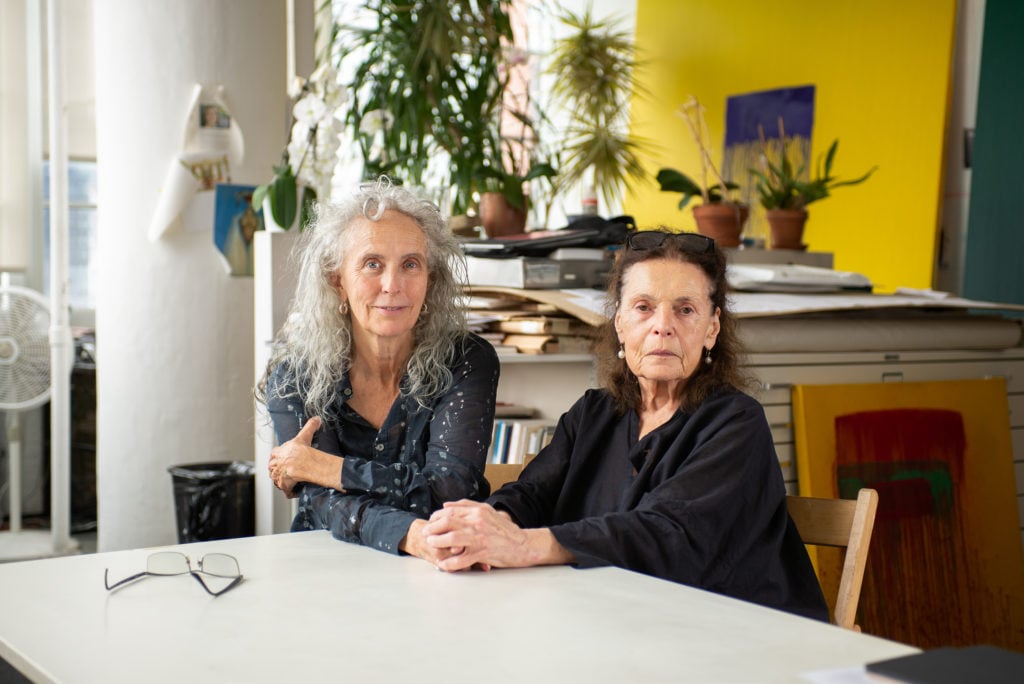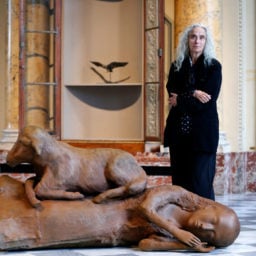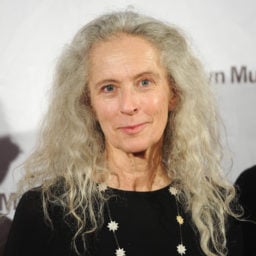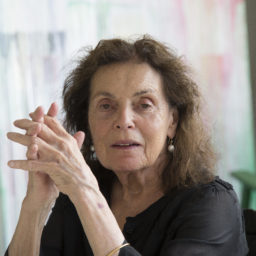It’s almost remarkable how regularly it happens. You’re speaking to an established person in the art world and they casually mention Pat Steir as if talking about a parent or pal—not one of the most influential artists of the last 50 years: “Pat suggested I do X,” “Pat introduced me to Y,” “Pat stopped by my studio last week and we talked about Z.”
Now 79, Steir looms large as a pathfinder, mentor, and friend to what seems like an entire generation of artists, especially women.
One of those artists is Kiki Smith, a well-known art star in her own right, who has known Steir for more than three decades. Smith wrote a postcard to Steir after seeing her on the cover of ARTnews magazine in 1985. In the image, Steir sits alertly in a chair in an all-black gown and bare feet, her gaze meeting the viewer uncompromisingly. Coming off of a solo show at the Brooklyn Museum, she was at the height of her powers. Smith was just beginning her own career.
Next week, Steir opens “Color Wheel,” an exhibition at the Hirshhorn Museum in Washington, D.C. The latest in a long line of solo museum outings for the artist, it’s also her single largest painting installation to date. Steir has created a suite of 30 towering paintings, each featuring a central color shifting in hue from the one preceding it. These will line the museum’s circular second-floor gallery to create an immersive color wheel.
Ahead of the occasion, artnet sat down with Steir and Smith together to discuss their friendship, work, and what it means to be a woman artist in the art world today.
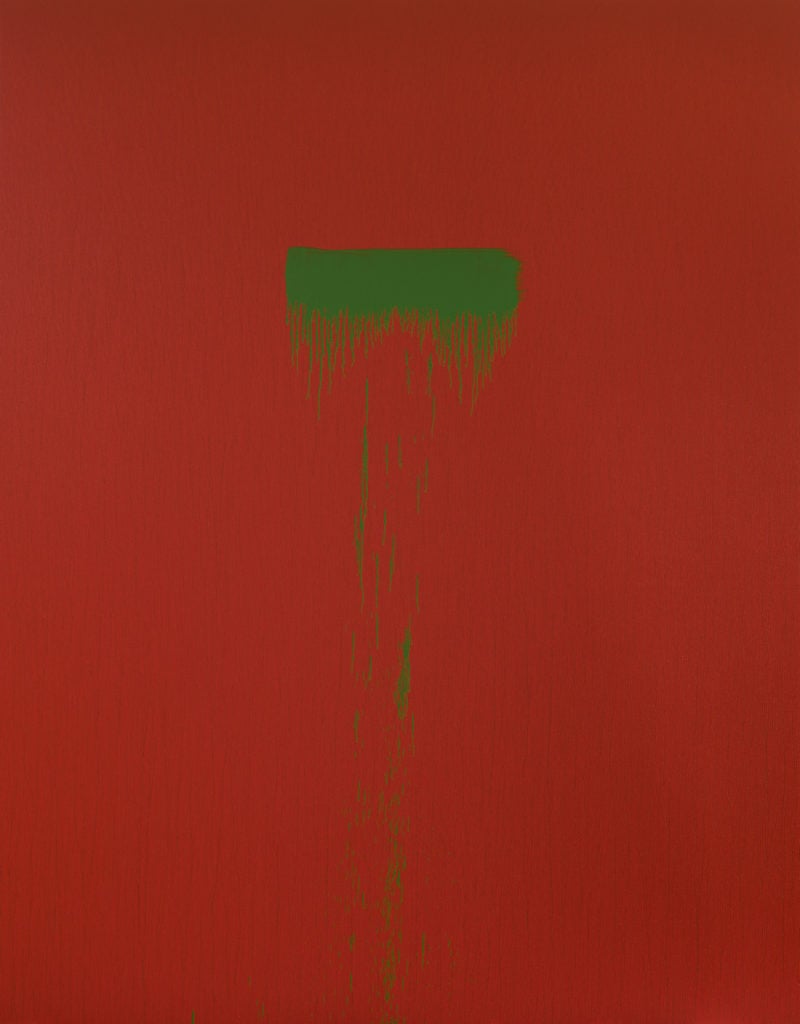
Pat Steir, Two (2018–19). Courtesy of Pat Steir and Lévy Gorvy. Photo: Alex Munro.
As the story goes, Kiki, you wrote to Pat after seeing her on the cover of ARTnews.
Kiki Smith: In that article, she said she had become something that was “unimaginable”—an artist. That still makes me cry. Even for me, coming from an art background, [that line] gave me such a sense of possibility and hope for my own life. It wasn’t like I had an idea of what I could become, but I liked that I could become something unimaginable. So I wrote her a postcard.
Pat Steir: The postcard said, “If you could survive, it means I can, too.”
KS: I remember as a kid I thought maybe, as a woman, you could be the subject of an artwork—you could be a model or something like that. But I never thought that I could do it myself, even though I liked making things. But Pat and many women of her generation were such strong evidence. Her generation made it very possible for women of my generation to embrace the idea that they could be artists. Also, Pat was working at a scale that most artists—men or women—weren’t working at.
PS: I had gotten to the age when you say “no” to normal.
KS: I never made anything bigger than a breadbox for most of my life. But Pat, you made these enormous conglomerations. There was an undeniable scale and presence in your work. And you were so free, playing with different styles and art historical languages, not being stopped by all the conventions of the time. I remember when I came to New York in the late ’70s, the artists who showed in galleries all made the exact same thing, practically. And people would always ask me, “when are you going to make that?” The galleries would come and they would look at my work and say, “But Kiki, are you going to be doing this next year?” I thought, “I don’t know.” Pat was utilizing all the different languages that were available.
PS: Well, I thought that since I was doing something that nobody could imagine I could do, I could do anything. I had the freedom of not being imaginable. I could wander around in my own field of preferences and desires, really. I didn’t have to stick to a program.
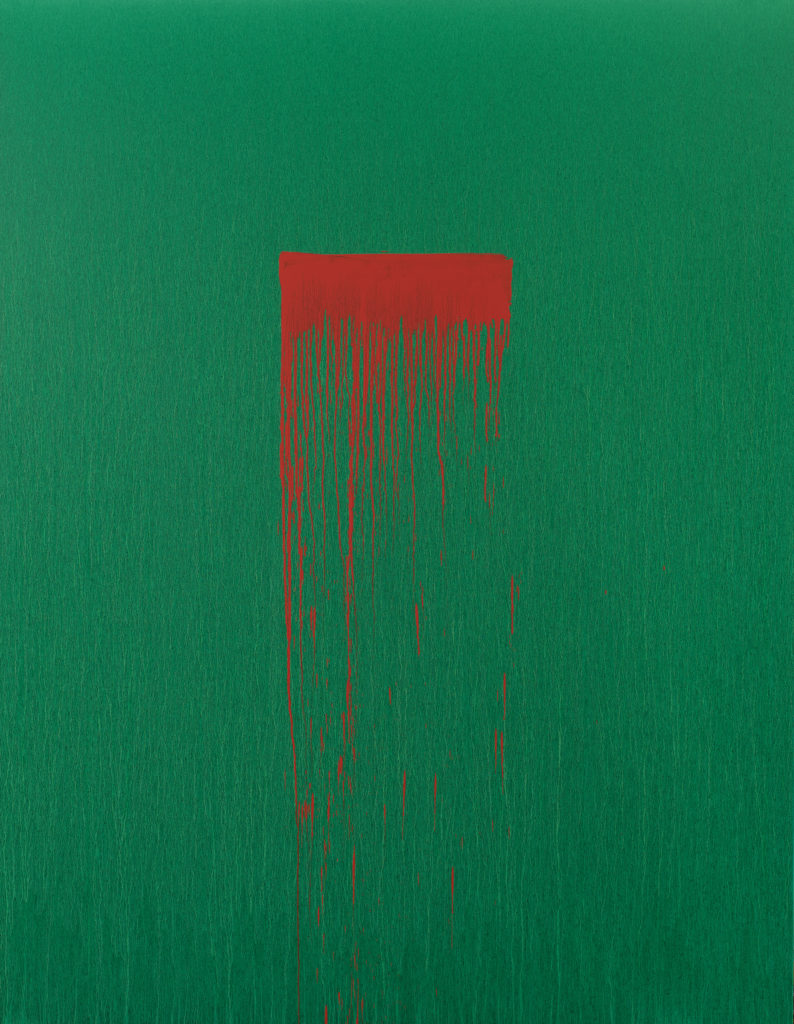
Pat Steir, Thirteen (2018–19). Courtesy of Pat Steir and Lévy Gorvy. Photo: Alex Munro.
KS: Also, it wasn’t like I was writing postcards to artists all the time! [Laughs] First, I’m shy, and second I’m lazy. It was the only postcard I ever wrote, practically. Another person could have written a letter, but a postcard is about as much as I could muster.
PS: And here’s the coincidence. Growing up, my family lived in Livingston, New Jersey, off South Orange Avenue. And down that same road is where Kiki and her family lived. My father went to art school but didn’t pursue art—which is good, because he wasn’t a good artist. [Laughs] He would point down the road to Kiki’s father’s house and go, “That man [sculptor Tony Smith] is a great artist. I’m not an artist, that man is an artist.” But we didn’t know each other then. We didn’t meet until later, after Kiki sent me the postcard. And I just fell in love with Kiki’s work and Kiki. Eventually I grew close with her whole family. When her mother Jane Smith was alive, she and Kiki and her sister, Seton, organized Sunday dinners, which I always went to.
KS: My mother died in 2005, so this was a few years before that. We had started making dinner every Sunday night at my mother’s house, because she lived around the corner from Pat. She couldn’t go out so much—she was in her late eighties. And then Pat and Joost [Elffers, Steir’s husband] said okay, they would come. They are very good cooks. So for three years we’d make dinner every Sunday night that we were there.
PS: It became a thing. Sometimes it was really a lot of people, like nine or ten people.
KS: It was non-negotiable. It’s just what you did on Sunday night. But Pat was already like that. Pat has always been responsible for throwing parties, hosting on holidays, getting people together.
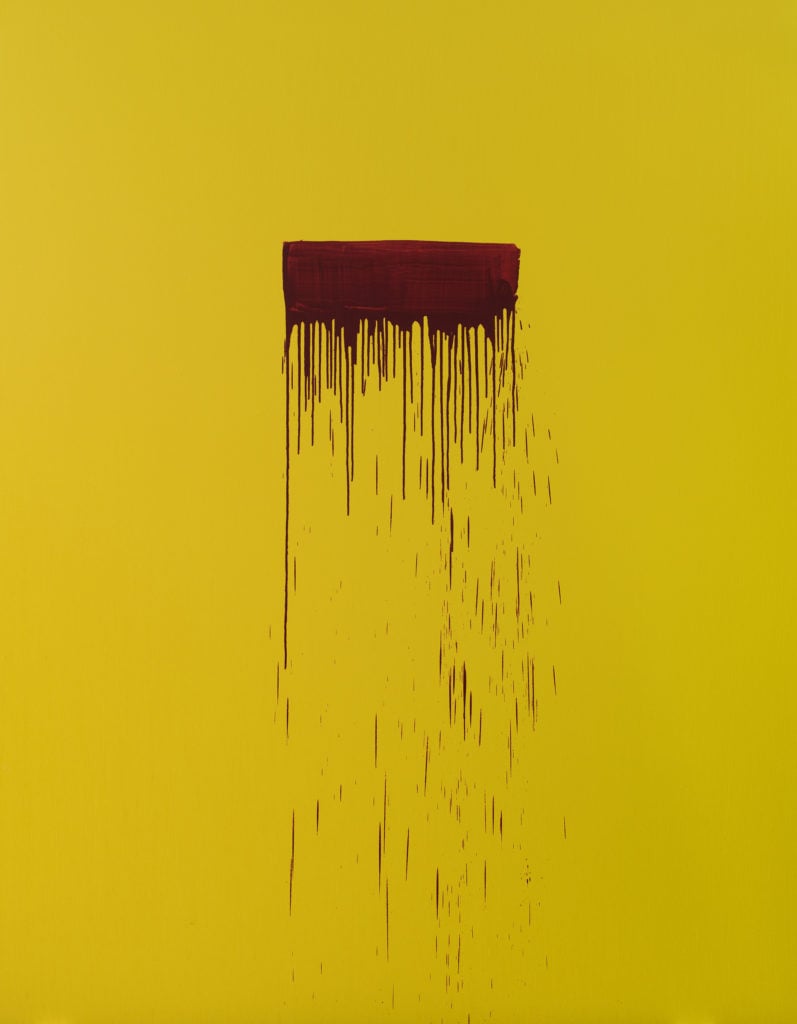
Pat Steir, Seven (2018–19). Courtesy of Pat Steir and Lévy Gorvy. Photo: Alex Munro.
Pat’s parties are famous in the art world. Can you tell me about them?
PS: For years, we did Christmas and Easter and Thanksgiving. We did a lot. People brought food and we cooked too. Kiki, being a vegetarian, was always responsible for roasting a lamb. So many people would come, such as Anne Waldman and her husband, Ed Bowes.
KS: Yes, and Betty and George Woodman.
PS: Herbert Muschamp. Lynne Tillman.
KS: Linda Yablonsky was often there and the Rowers—Mary Rower and Sandy Rower.
PS: And Joan Jonas. John Yao and his wife. The Tuttles. Carol and Eva LeWitt.
KS: Everybody had a good time. They have an incredibly beautiful house. Everything is perfect in it, and Joost and Pat are really good cooks. People would sit down on their beautiful Frank Gehry tables and really get to know each other. Pat is a person who’s always done this. She and Joost invited people into their hearts, and people felt that. And it was all different kinds of people.
PS: We didn’t have a crowd. Some people in the art world stick to their crowd, their people. We didn’t have that and still don’t. We just have friends.
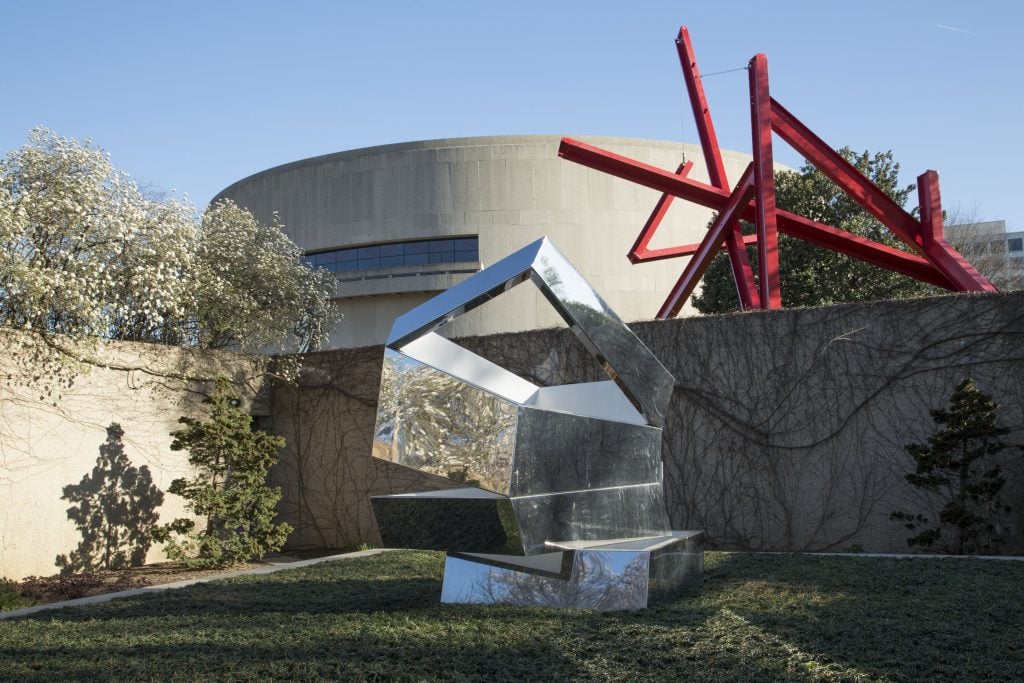
The Hirshhorn Museum’s Sculpture Garden. Photo courtesy of the Hirshhorn Museum and Sculpture Garden, Washington, D.C.
What about in the studio? In what ways have your respective practices been influenced by each other’s work?
KS: I don’t know if it has, particularly. Though I come over here and go, “Whew, I got to go home and get to work!” I’ve made three things the size of a shoe-box all summer and she’s made about 30 paintings that are all 17-feet tall. [Laughs]
PS: Kiki exaggerates on the low end. She just had three major museum shows. And when I see all the pictures of her show, I say, “Wow, when did you do all this work?”
KS: We’re both workers. You can say that. It doesn’t matter if you’re an artist or not. You don’t get from one place to another without working. Some people can make enormous jumps, they don’t have to make all the little steps. But Pat’s a worker and I’m a worker. It’s just our personalities.
PS: I still come to the studio every day. There’s no room to do anything else. I have a studio downstairs where people are stretching canvases for me now, because I have two shows coming up after the Hirshhorn.
KS: The scale Pat works at—there were very few women historically who made things at such a scale. It’s not that the size matters so much. Artists work to the scale that’s appropriate for their work. That’s something one knows internally. But still, Pat working at that size made a difference in the community.
PS: I’m making landscapes, not landscape paintings. Landscapes. They’re bigger than my niece’s apartment—isn’t that incredible? [Laughs]
KS: Because my father made very big, all-black sculptures, I didn’t make anything big or black until I was in my forties or fifties. It was like, “That’s my father’s territory” or something. It takes a lot out of you though. Pat’s work takes a great deal of tenacity and physical stamina and energy to do.
PS: I never made work to be recognized or to become famous. I make art because I have to make art. Of course I want to make something touching and beautiful, but more than anything, I just want to make something. I don’t do it for any purpose more than making it. And so it gives me leeway to make it something more than just a beautiful object. I think that’s true of Kiki’s work, too. Kiki can touch a dust bunny and make it become magic.
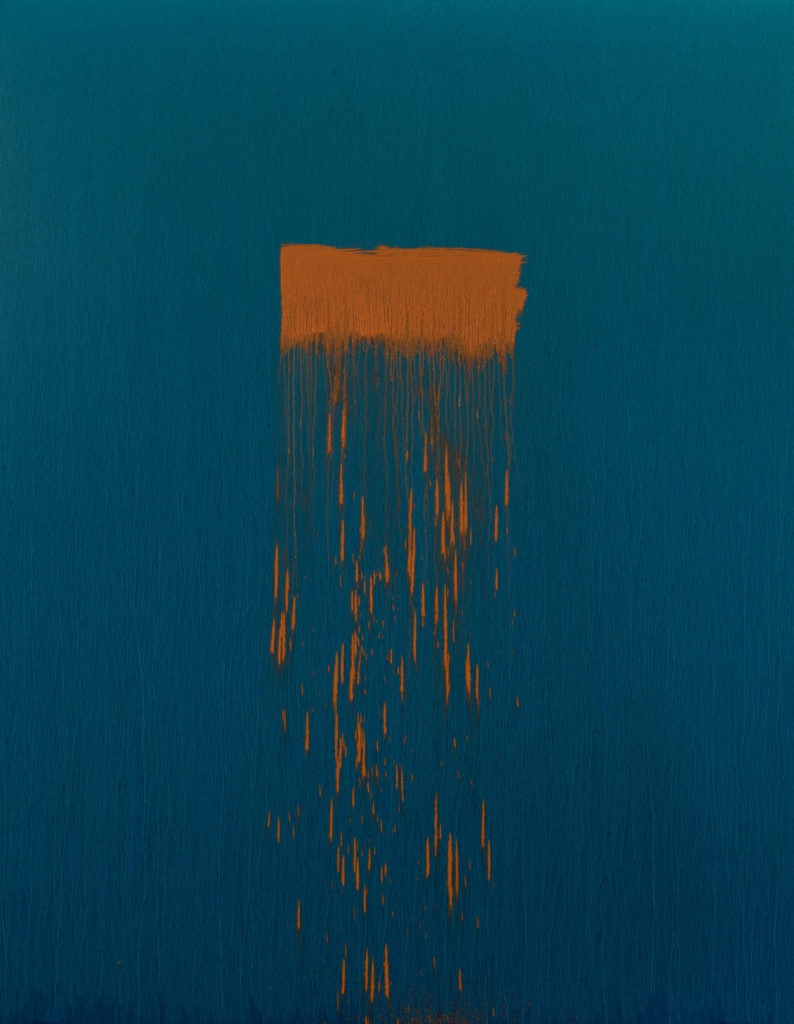
Pat Steir, Twenty (2018–19). Courtesy of Pat Steir and Lévy Gorvy. Photo: Alex Munro.
Pat, when Kiki first reached out to you, her career was just beginning in many ways. What’s it been like to see her work evolve so significantly since then?
PS: Kiki’s work has always been intimate, no matter what the scale—her big work is intimate, too. But there are some things that just pulsate. She has a little tiny sculpture of a man and a woman who are having sex. It’s so personal that I hate to look at it. I feel like a peeping tom.
KS: I’m embarrassed by it, too. I felt like, “Oh, they’re going to think I’m thinking about sex.” [Laughs]
PS: Her work has always had that feeling. Even from the beginning, from the early embryo drawings.
KS: That would have been in the late ’80s, around the time I had my first one-person show in ’88. The first year I had a show and the first year Seton had a show was the year our other sister died. Pat had a sister die too. And she cared for her niece after her sister’s death, and my sister also had a child that we had to care for. People don’t talk about the significance of their families that much in the art world. That was something that I saw in Pat—the care and the kind of spirituality in her attention to others. It’s very significant to me.
PS: My parents died young. Of natural causes, but young. And my brother moved to New Zealand, so in a way my sister was the only family that I had.
KS: I’m the oldest in my family now. It’s strange, your parents die and you’re kind of just out there floating. It’s not that reassuring in life to think that you’re the top of the food chain, because you know what a nitwit you are.
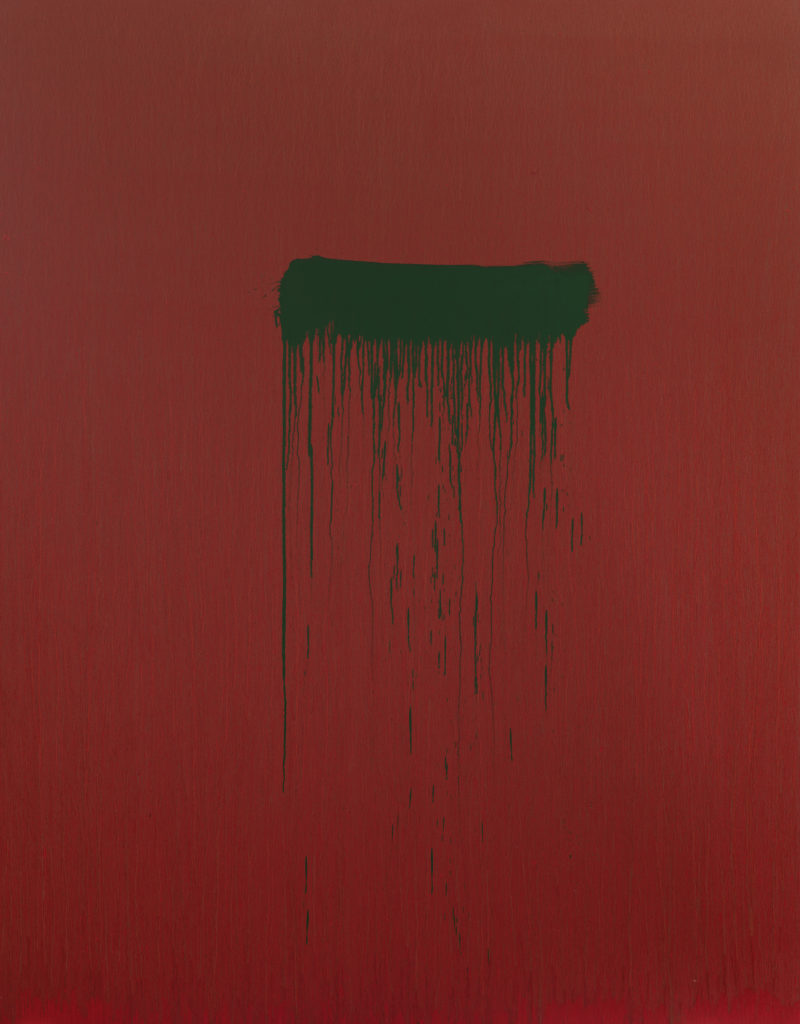
Pat Steir, One (2018–19). Courtesy of Pat Steir and Lévy Gorvy. Photo: Alex Munro.
Being both friends and fans of each other’s work, how do you see the other’s personality coming through in their art?
KS: Pat’s work is made in the present. I can’t say that it influences me in any discernible way that I can see, but I think that’s important. It’s not about having a fixed notion or manipulating and squishing things into a predetermined form, making things subservient. It’s about creating a situation and then allowing something to happen in that situation. It has a vitality because of that.
PS: I think Kiki’s work is magical. She’s the best Snow White witch you could find. She’s not a dark witch. She’s a light witch. And what she touches becomes magic. She’s been doing these tapestries. It’s hard to make tapestries magical, maybe almost impossible. Hers are magical.
I think the same thing was true for Agnes Martin and the magic of art. Agnes made straight lines. We can see straight lines anywhere, and yet when Agnes makes a straight line, I will get it. I burst into tears before I think about anything. I’m so incredibly moved and touched by it. And that’s what’s mysterious about art. How can that happen? One straight line is math and another is magic. One drawing of a foot is a drawing of a foot, and the other is a drawing of a foot by Kiki, and so it gets to be magic.
KS: Pat has also championed and supported so many artists and has lived with many artists’ work. I mean, you can go into artists’ houses and they have nothing but their own work or they have no work at all. You go into her house and it’s this really vibrant history of friendship and appreciation of other people’s work. It’s not easy to have the space inside of yourself to fit in other people’s work; many artists don’t. Pat does.
